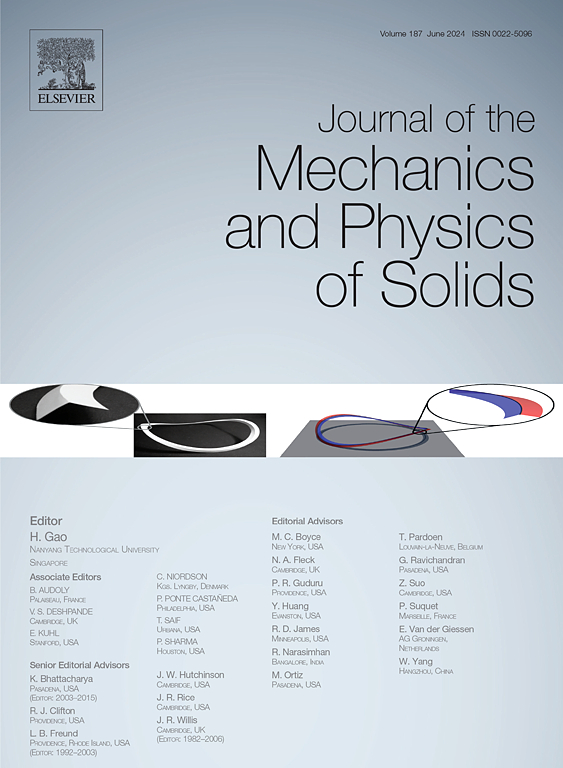t-PiNet: A thermodynamics-informed hierarchical learning for discovering constitutive relations of geomaterials
IF 5
2区 工程技术
Q2 MATERIALS SCIENCE, MULTIDISCIPLINARY
引用次数: 0
Abstract
More attention has been paid to integrating existing knowledge with data to understand the complex mechanical behaviour of geomaterials, but it incurs scepticism and criticism on its generalizability and robustness. Moreover, a common mistake in current data-driven modelling frameworks is that history internal state variables and stress are known upfront and taken as inputs, which violates reality, overestimates model accuracy and cannot be applied to modelling experimental data. To bypass these limitations, thermodynamically consistent hierarchical learning (t-PiNet) with iterative computation is tailored for identifying constitutive relations with applications to geomaterials. This hierarchical structure includes a recurrent neural network to identify internal state variables, followed by using a feedforward neural network to predict Helmholtz free energy, which can further derive dissipated energy and stress. The thermodynamic consistency of t-PiNet is comprehensively validated on the synthetic data generated by von Mises and modified Cam-clay models. Subsequently, the potential of t-PiNet in practice is confirmed by applying it to experiments on kaolin clay. The results indicate neural networks embedded by thermodynamics perform better on the loading space beyond the training data compared with the conventional pure neural network-based modelling method. t-PiNet not only offers a way to identify the mechanical behaviour of materials from experiments but also ensures it is further integrated with numerical methods for simulating engineering-scale problems.
求助全文
约1分钟内获得全文
求助全文
来源期刊
CiteScore
9.80
自引率
9.40%
发文量
276
审稿时长
52 days
期刊介绍:
The aim of Journal of The Mechanics and Physics of Solids is to publish research of the highest quality and of lasting significance on the mechanics of solids. The scope is broad, from fundamental concepts in mechanics to the analysis of novel phenomena and applications. Solids are interpreted broadly to include both hard and soft materials as well as natural and synthetic structures. The approach can be theoretical, experimental or computational.This research activity sits within engineering science and the allied areas of applied mathematics, materials science, bio-mechanics, applied physics, and geophysics.
The Journal was founded in 1952 by Rodney Hill, who was its Editor-in-Chief until 1968. The topics of interest to the Journal evolve with developments in the subject but its basic ethos remains the same: to publish research of the highest quality relating to the mechanics of solids. Thus, emphasis is placed on the development of fundamental concepts of mechanics and novel applications of these concepts based on theoretical, experimental or computational approaches, drawing upon the various branches of engineering science and the allied areas within applied mathematics, materials science, structural engineering, applied physics, and geophysics.
The main purpose of the Journal is to foster scientific understanding of the processes of deformation and mechanical failure of all solid materials, both technological and natural, and the connections between these processes and their underlying physical mechanisms. In this sense, the content of the Journal should reflect the current state of the discipline in analysis, experimental observation, and numerical simulation. In the interest of achieving this goal, authors are encouraged to consider the significance of their contributions for the field of mechanics and the implications of their results, in addition to describing the details of their work.

 求助内容:
求助内容: 应助结果提醒方式:
应助结果提醒方式:


